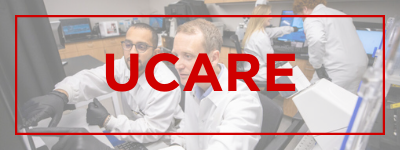UCARE: Undergraduate Creative Activities and Research Experiences

UCARE: Research Products
Date of this Version
Fall 2017
Document Type
Poster
Abstract
Possessing some of the largest and most complex genomes of any eukaryotic organelles, plant mitochondria are notorious for their rapidly rearranging genetic framework. In addition to containing a large and complex mitochondrial genome, the mitochondria of several plants in the genus Brassica have also been shown to contain an independent, self-replicating linear plasmid. Interestingly, the plasmid appears to be able to move independently between the cytoplasm and the mitochondria, and it can be paternally inherited, unlike the rest of the mitochondrial genome. The plasmid also has features similar to those of adenoviruses, including terminal inverted repeats and covalently bound proteins at the 5’ termini. This has led us to hypothesize that the plasmid was originally acquired as a virus by a subspecies of Brassica and has since become an integrated component of the mitochondrial machinery in these plants. The goal of our research is to analyze the coding regions and terminal proteins of the plasmid in order to better understand the mechanisms by which it is transported into and replicated within plant mitochondria. If we can determine how the Brassica plasmid moves between the cytoplasm and mitochondria, it has the potential to be used as a vehicle to shuttle foreign DNA into plant mitochondria and allow for the synthesis of exogenous RNA and proteins. A mitochondrial-targeting plasmid such as this would not only allow for a better understanding of the molecular composition of plant mitochondria, but it may also lead to an enhanced ability to alter their genetic and biochemical environment, which could have effects on the traits and life history of the plant.


Comments
Copyright © 2017 Mackenzie Strehle